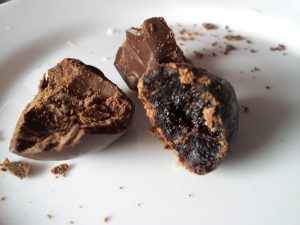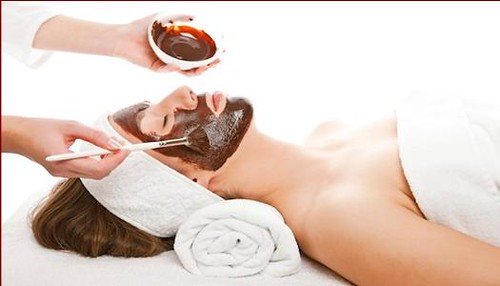The impact of chocolate on skin health is a subject that has sparked interest and debate among many. The question of whether chocolate has a positive or negative effect on skin health is one that many people ponder. In this article, we delve into the complex relationship between chocolate and skin health, examining both the potential benefits and drawbacks associated with chocolate consumption and its use in skincare routines.
Chocolate, while widely associated with indulgence and pleasure, has a much deeper impact on the skin than merely satisfying our sweet cravings. Research has demonstrated that the components of chocolate can have both beneficial and detrimental effects on the health and appearance of our skin. Understanding the composition of chocolate, its various forms, and its impact on skin health can allow us to make informed decisions when incorporating it into our diet or skincare regimen. This understanding is critical, as it allows us to separate fact from fiction and truly understand how our skin reacts to this popular treat.
Understanding Chocolate and its Components



Understanding the effects of chocolate on skin health necessitates a comprehensive understanding of its composition.Chocolate is primarily composed of cocoa solids, cocoa butter, sugar, and occasionally dairy products. The types of chocolate vary, ranging from processed chocolate candies with added sweeteners and preservatives, to pure dark chocolate and cacao, which are less processed [1].
Cocoa solids lend chocolate its unique taste and aroma and are packed with flavonoids, a type of antioxidant known for its skin-protective properties. Cocoa butter, derived from cocoa beans, is known for its moisturizing and nourishing properties and is a common ingredient in a wide range of skincare products. The sugar and dairy components commonly found in chocolate candies can have varying effects on the skin, with some potentially contributing to skin issues including breakouts and inflammation.
In addition to the primary components, chocolate also contains essential minerals such as magnesium, iron, and copper, which are known to support skin health. These minerals contribute to the production of collagen and elastin, proteins that maintain skin’s elasticity and firmness. Therefore, understanding the composition of various types of chocolate can provide valuable insights into their potential impact on skin health.
Adverse Effects of Chocolate on Skin Health
Despite its potential benefits, chocolate, particularly processed chocolate candy with added sweeteners, can have adverse effects on skin health. Such chocolate can contribute to the breakdown of skin cells, leading to enhanced aging. Furthermore, chocolate has been linked to increased inflammation in the skin, which can exacerbate conditions such as acne and oil-related breakouts. Dairy ingredients found in chocolate candies, including cream, milk, and butter, can also trigger breakouts and contribute to skin issues. However, it’s worth noting that the long-held belief that chocolate directly causes acne has been debunked since the 1960s.
A specific example of this can be seen in a study published in the Journal of the American Academy of Dermatology, which found no significant association between chocolate consumption and acne development among young adults. The study did, however, find that a high-glycemic diet, characterized by foods that cause a rapid increase in blood sugar levels, was associated with an increased risk of acne. This suggests that it is not chocolate per se that causes acne, but rather the overall dietary pattern and individual susceptibility to acne.
Beneficial Effects of Chocolate on Skin Health



Despite these potential downsides, not all forms of chocolate have negative effects on skin health. Pure dark chocolate and cacao are known to be rich in antioxidants, which support optimized skin functions. These antioxidants combat free radicals, unstable molecules that contribute to the aging of the skin [1,2]. In addition, chocolate contains essential vitamins and minerals like magnesium, copper, and iron, which promote the production of collagen, elastin, and help balance hormones. Therefore, when consumed in moderation and in its pure form, chocolate can indeed confer benefits to the skin.
An example of the beneficial effects of dark chocolate on skin health is illustrated in a study published in the Journal of Nutrition. The study found that consuming high-antioxidant dark chocolate improved skin hydration, thickness, and blood flow. The participants consumed dark chocolate with a high cocoa content for 12 weeks, and the results showed significant improvements in skin hydration and blood flow, both of which are critical for maintaining healthy skin. The study further indicated that the skin’s resistance to UV radiation was enhanced, hinting at a protective role of dark chocolate against sun damage.
Cocoa Butter: Key Ingredient for Skin Health
Cocoa butter, derived from cocoa beans, plays a key role in the beneficial effects of chocolate on skin health. Pure cocoa butter is known to be beneficial for skin repair, health, and protection. With its anti-inflammatory properties, cocoa butter can soothe skin conditions like dermatitis, eczema, and psoriasis. It can also help reduce the appearance of stretch marks and ease dryness and itching during pregnancy. The fatty acids in cocoa butter help maintain the skin’s oil barrier and seal in hydration, making it an ideal ingredient for makeup products.
One specific example of the benefits of cocoa butter can be seen in its use for the prevention and treatment of stretch marks. When applied topically, cocoa butter can help improve the elasticity of the skin and reduce the appearance of stretch marks. Its moisturizing properties help keep the skin hydrated and supple, preventing the formation of new stretch marks and reducing the visibility of existing ones. Pregnant women frequently use cocoa butter-based creams and lotions to keep their skin moisturized and minimize the occurrence of stretch marks.
Effects on Skin Hydration and Elasticity
Research has shown that the regular consumption of high-antioxidant chocolate can improve the skin’s ability to withstand damage from UV radiation. Furthermore, high-antioxidant chocolate has also been found to increase skin elasticity. These effects can be attributed to the antioxidants present in chocolate, particularly dark chocolate, which is known to be rich in such compounds.
For example, a study published in the Journal of Cosmetic Dermatology found that the regular consumption of dark chocolate resulted in improved skin hydration and elasticity among a group of women. The participants consumed dark chocolate with a high cocoa content daily for 12 weeks, and the results showed significant improvements in skin hydration and elasticity compared to the control group. This suggests that the antioxidants present in dark chocolate can positively impact the skin’s moisture levels and elasticity, contributing to overall skin health.
Chocolate’s Role in Protecting Skin from UV Damage
Some studies suggest that chocolate, particularly dark chocolate, may offer protection to the skin from damaging sunlight. Cocoa beans are rich in flavanols, a type of antioxidant that may contribute to this protective effect. However, it’s worth noting that raw cocoa beans have higher levels of flavanols compared to processed chocolate, as most of these antioxidants are lost during the chocolate-making process.
One such study published in the Journal of Cosmetic Dermatology examined the effects of consuming high-flavanol cocoa on skin health. The participants consumed a cocoa beverage with a high flavanol content for 12 weeks, and the results showed improved resistance to UV radiation, decreased skin redness, and increased skin hydration. This suggests that the flavanols present in cocoa may offer protection against UV damage and contribute to overall skin health.
Chocolate and Acne
The relationship between chocolate consumption and acne is a matter of ongoing debate.While some studies have found that dark chocolate consumption can exacerbate acne in young people due to increased shedding of dead skin cells and the presence of certain microorganisms. further research is needed to fully understand the effects of dark chocolate on acne development. Considerations of individual factors such as hormones, family history, and diet are also important when considering the impact of chocolate on acne.
For example, a study published in the Journal of the American Academy of Dermatology found an association between chocolate consumption and acne development in a group of young men, but not in young women. The study suggests that individual factors such as hormonal differences and genetic predisposition may play a role in how chocolate affects acne. It is important to note that overall diet and lifestyle factors also contribute to acne development, and chocolate consumption should be considered in the context of a balanced diet.
Chocolate Face Masks and DIY Recipes
- Chocolate face masks have gained popularity in the skincare world for their potential benefits to the skin.
- These masks can provide essential antioxidants that fight off free radicals, promoting healthier-looking skin.
- A plethora of DIY recipes for chocolate face masks can be found online, incorporating ingredients like cocoa powder, honey, yogurt, and avocado.
- These masks offer a fun and natural way to incorporate chocolate into skincare routines.For instance, a simple DIY recipe for a chocolate face mask involves mixing cocoa powder, honey, and yogurt to form a paste.
- The cocoa powder provides skin with much-needed antioxidants, honey has antimicrobial properties, and yogurt contains lactic acid, which can help exfoliate the skin.
- When applied to the face, this mask can help nourish and rejuvenate the skin, leaving it feeling refreshed and revitalized, and giving it a healthy glow.
Chocolate Skincare Products on the Market
There are a multitude of chocolate skincare products available in the market, catering to the growing demand for chocolate in skincare. These products range from cocoa butter lotions, chocolate-infused serums, to chocolate-scented body scrubs. However, it’s important to read labels and choose products that contain high-quality ingredients and minimal additives to ensure optimal skin health.
When selecting chocolate skincare products, it’s crucial to look for ones with high levels of cocoa or cocoa butter – the ingredients that provide the most skin benefits. Additionally, products with excessive amounts of added sugars or artificial fragrances should be avoided as these can potentially irritate the skin or cause other adverse effects. An informed selection of chocolate skincare products can allow you to enjoy the benefits of chocolate for your skin while avoiding potential pitfalls.
Conclusion
In conclusion, the effects of chocolate on skin health are multifaceted and largely dependent on the type and quality of chocolate. While processed chocolate candies with added sweeteners can have negative effects on skin health, pure dark chocolate and cacao, which are rich in antioxidants, can benefit the skin. Specifically, dark chocolate may offer some protection against UV damage and enhance skin elasticity, while cocoa butter can promote skin repair and hydration. However, moderation and individual sensitivities to dairy and other ingredients should be taken into account when consuming chocolate or using chocolate-based skincare products.
Balancing chocolate consumption and selecting high-quality chocolate skincare products can contribute to a healthy and radiant skin. As with any skincare routine, personalization and balance are key. With the right approach, incorporating chocolate into your skincare routine can be an enjoyable and beneficial experience. The key takeaway is that chocolate, especially when chosen wisely, can indeed be a delicious and nourishing treat for your skin.

